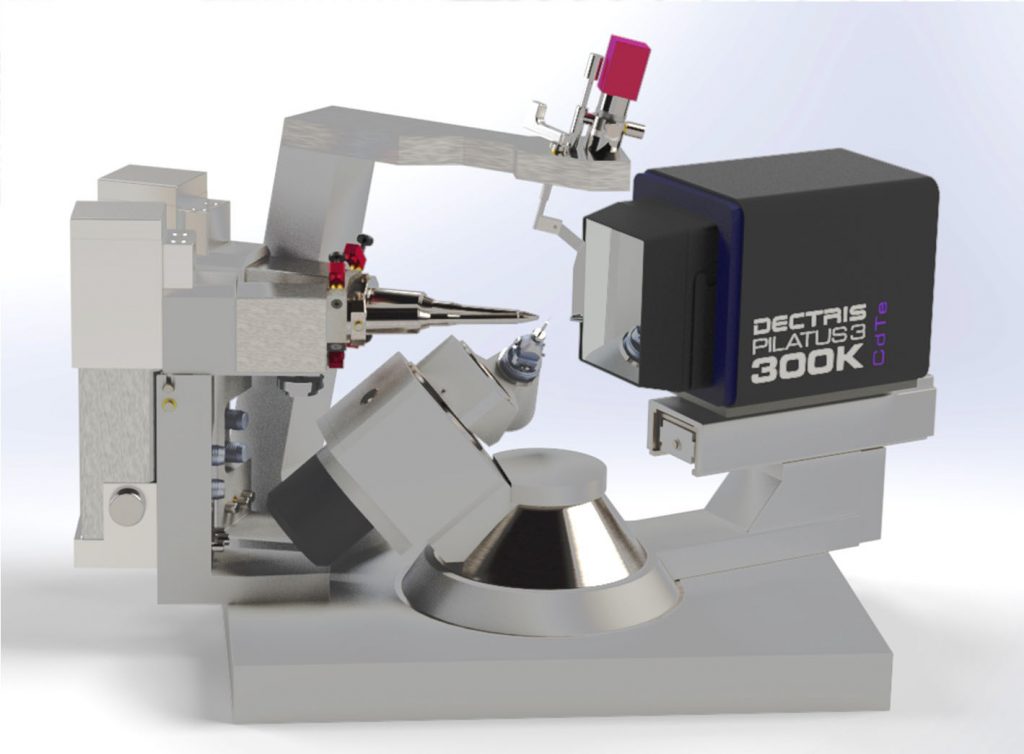AXT is proud to announce that they will soon be installing a Synergy-S single crystal X-ray diffraction system at the University of Queensland (UQ). This high-end system is manufactured by Rigaku Oxford Diffraction (ROD), the leaders in the field of single crystal and small molecule diffractometers.

The Synergy-S is the latest generation of single crystal diffractometers, and the first instrument to be produced by ROD, who combine the expertise of X-ray analytical powerhouses Rigaku and Agilent, following Rigaku’s acquisition of the latter. It features their PhotonJet-S X-ray sources which delivers high intensity flux to a small focal point. The air-cooled design also provides advantages including simplicity over water-cooled sources.
The system specified by the University of Queensland is a world first combining a dual wavelength source (Molybdenum and Silver) and the PILATUS CdTe detector. The detector offers shutterless operation, fast 20Hz sampling rate while providing excellent dynamic range and sensitivity.
Associate Professor Jack Clegg is the Lead Chief Investigator on the ARC LIEF grant application that facilitated the acquisition. When asked why he chose the Synergy-S system, he said, “the system satisfied all our performance requirements. The dual wavelength configuration will allow us to carry out high resolution studies and probe changes in charge density. The large enclosure offers us the flexibility to house lasers and other ancillary devices also allowing high pressure diamond anvil experiments in situ. Furthermore, with the ability to integrate N-Helix, we can carry out studies all the way down to 30K (-243°C). With this system we will be able to perform anything from basic single crystal experiments, all the way up to detailed structural analysis of complex metal-organic compounds as well as unique photo crystallography experiments”.
Assoc. Prof. Clegg went on to explain that the internally housed lasers will permit dynamic studies to be carried out which will provide a deeper understanding of how changes occur and accelerate their research outcomes through direct observations as opposed to inferred results. It will also enable them to become less reliant on the synchrotron which will also help them to prove hypotheses more quickly.
While the instrument will be utilised by researchers from UQ, QUT and USC ranging from honours students to post doctoral researchers, it is also expected that the unique configuration and capabilities of this instrument will attract users and collaborators from across Australia and around the world. Assoc. Prof. Clegg also remarked that the user-friendly software would enable novice users to easily produce publication quality data.
The appeal of the system is also further reaching with industry interest also expected from areas such as the power industry who deal with sulfide build up in transformers and the mining industry who are interested in the structure of minerals.
Assoc. Prof. Clegg is grateful to the Australian Research Council who provided funding for the instrument through their LIEF (Linkage, Infrastructure, Equipment and Facilities) program.
Richard Trett, Managing Director at AXT also commented, “We pride ourselves in bringing cutting edge solutions to local research facilities supporting Australia’s global position as a world leader in scientific research. The unique configuration chosen by UQ goes further than this and is internationally significant for ROD and crystallography. We are excited and honoured to be working with Assoc. Prof. Clegg and supporting UQ’s research endeavours.”
Single crystal diffractometers from ROD are part of AXT’s vast array of analytical instrumentation.
